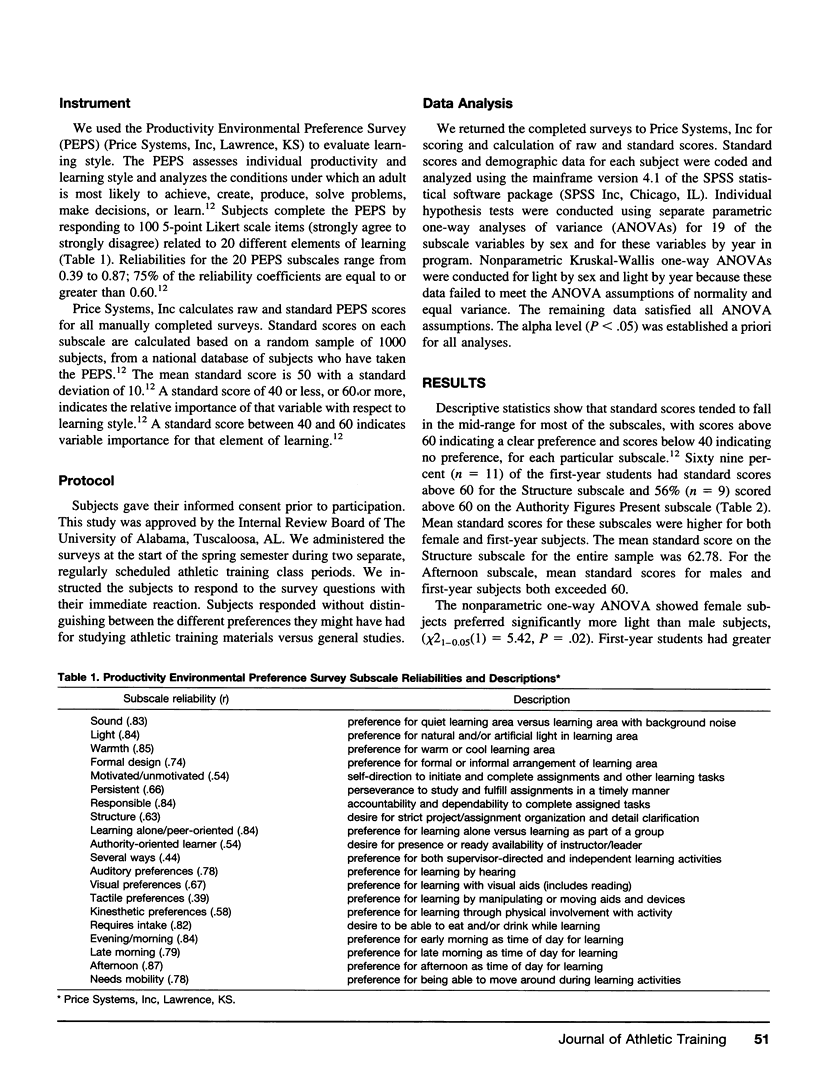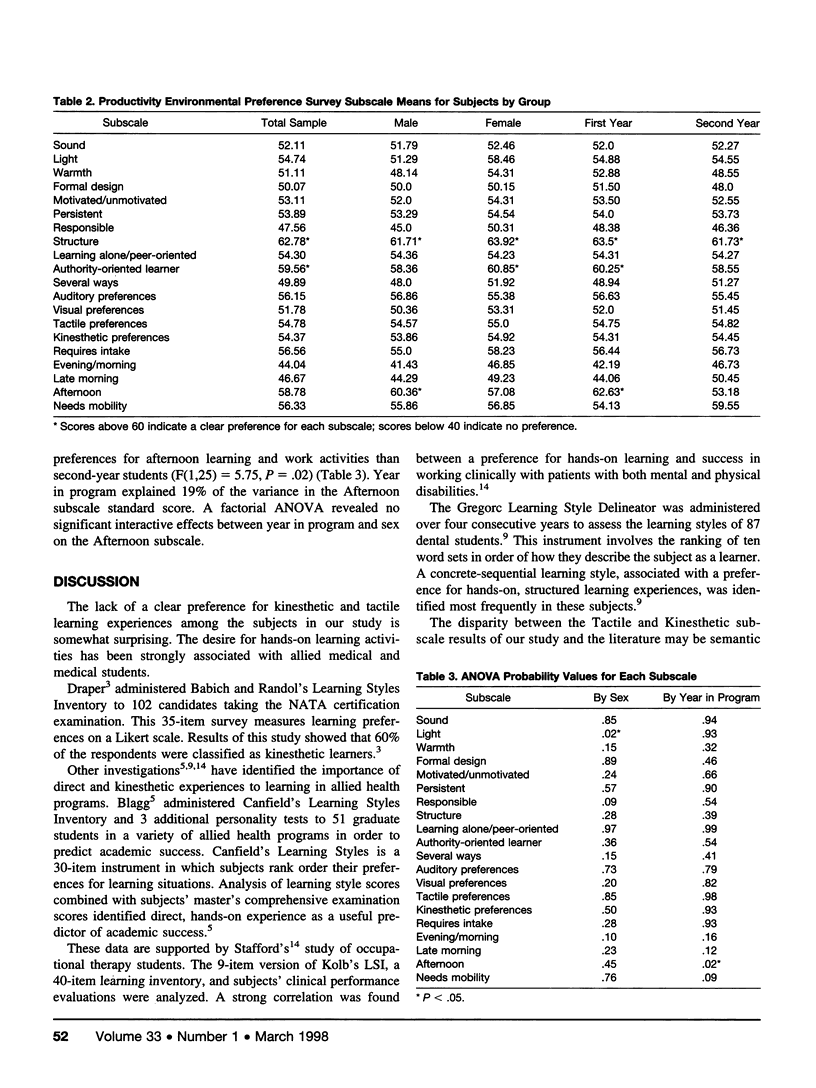Abstract
Objective:
Increased attention has been directed toward assessing and improving academic quality in athletic training education. The educational process has been assessed from a global level, but little is known about how athletic training students learn. The purpose of this investigation was to assess the learning styles of undergraduate athletic training students.
Design and Setting:
Undergraduate students enrolled in a Committee on Accreditation of Allied Health Education Programs (CAAHEP)-accredited athletic training education program completed a learning styles inventory during a regularly scheduled athletic training class at the start of the spring semester.
Subjects:
Twenty-seven student athletic trainers (age range, 19-30 yrs, mean age = 20.5 yrs) served as subjects. Sixteen subjects (7 male, 9 female) were in the first year of this 3-year program. Eleven subjects (7 male, 4 female) were second-year students.
Measurements:
Learning style was assessed using the Productivity Environmental Preference Survey.
Results:
Parametric and nonparametric one-way analyses of variance for each learning subscale by sex and by year in program revealed significant differences (P < .05) in light preferences for male and female students. There were also significant differences (P < .05) between first-and second-year students in preferences for afternoon learning activities.
Conclusions:
These findings suggest that undergraduate athletic training students function best as leamers in a well-lit leaming environment. The significance of aftemoon as the preferred time for learning reinforces the importance of the clinical setting in the introduction and mastery of skills. Athletic training educators and clinical instructors can use these results as they examine their teaching strategies and educational environments.
Keywords: learning preferences, Productivity Environmental Preference Survey
Full text
PDF



Selected References
These references are in PubMed. This may not be the complete list of references from this article.
- Billings D. M. Assessing learning styles using a computerized learning style inventory. Comput Nurs. 1991 May-Jun;9(3):121–125. [PubMed] [Google Scholar]
- Blagg J. D., Jr Cognitive styles and learning styles as predictors of academic success in a graduate allied health education program. J Allied Health. 1985 Feb;14(1):89–98. [PubMed] [Google Scholar]
- Griggs D., Griggs S. A., Dunn R., Ingham J. Accommodating nursing students' diverse learning styles. Nurse Educ. 1994 Nov-Dec;19(6):41–45. doi: 10.1097/00006223-199411000-00018. [DOI] [PubMed] [Google Scholar]
- Hendricson W. D., Berlocher W. C., Herbert R. J. A four-year longitudinal study of dental student learning styles. J Dent Educ. 1987 Apr;51(4):175–181. [PubMed] [Google Scholar]
- Merritt S. L., Marshall J. C. Reliability and construct validity of alternate forms of the CLS Inventory. ANS Adv Nurs Sci. 1984 Oct;7(1):78–85. doi: 10.1097/00012272-198410000-00009. [DOI] [PubMed] [Google Scholar]
- Newstead S. E. A study of two "quick-and-easy" methods of assessing individual differences in student learning. Br J Educ Psychol. 1992 Nov;62(Pt 3):299–312. doi: 10.1111/j.2044-8279.1992.tb01024.x. [DOI] [PubMed] [Google Scholar]
- Stafford E. M. Relationship between occupational therapy student learning styles and clinic performance. Am J Occup Ther. 1986 Jan;40(1):34–39. doi: 10.5014/ajot.40.1.34. [DOI] [PubMed] [Google Scholar]


